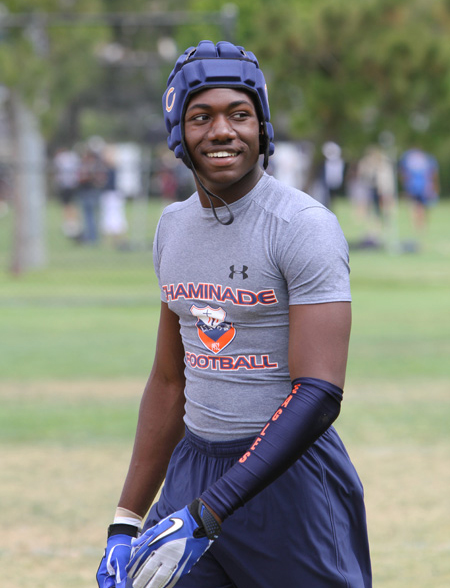FREDERICK O. MUELLER, Ph.D. ROBERT C. CANTU, M.D. Brain and spinal injuries in football have been dramatically reduced since the rules were changed in 1976 to prohibit butt blocking and face tackling, and any other technique in which the helmet and facemask purposely received the brunt of the initial impact. There are still a small number of football players (and fewer in other sports) that become paralyzed, but the lesson to keep the head and face out of blocking and tackling remains. Generally, about 3 – 5% of the injuries experienced by participants in athletics are concussions, e.g., temporary dizziness, confusion, nausea, headaches, and perhaps unconsciousness. Concussions are given grades from Grade 1 (a hit that dazes for a few minutes to Grade 3 (unconscious). No concussion should be dismissed as minor until proven so by medical personnel. The task is to be sure that the athlete no longer has any post concussion symptoms at rest and exertion before returning to competition. What is now called “the second impact syndrome” with its high rate of morbidity if not mortality is the result of returning to play too soon. Several suggestions for reducing brain and spinal injuries follows:
- Preseason physical exams for all participants. Identify during the physical exam those athletes with a history of previous brain or spinal injuries. If the physician has any questions about the athlete’s readiness to participate, the athlete should not be allowed to play.
- A physician should be present at all games and practices. If it is not possible for a physician to be present at all games and practice sessions, emergency measures must be provided. The total staff should be organized in that each person will know what to do in case of a brain or spinal injury in game or practice. Have a plan ready and have your staff prepared to implement that plan. Prevention of further injury is the main objective.
- Athletes must be given proper conditioning exercises which will strengthen their neck muscles in order for them to be able to hold their head firmly erect when making contact. Strong neck muscles may help prevent neck injuries.
- Coaches should drill the athletes in the proper execution of the fundamentals of the football skills, particularly blocking and tackling. KEEP THE HEAD OUT OF FOOTBALL.
- Coaches and officials should discourage the players from using their heads as battering rams. The rules prohibiting spearing should be enforced in practice and games. The players should be taught to respect the helmet as a protective device and that the helmet should not be used as a weapon.
- All coaches, physicians and trainers should take special care to see that the players’ equipment is properly fitted, particularly the helmet.
- Strict enforcement of the rules of the game by both coaches and officials will help reduce serious injuries.




